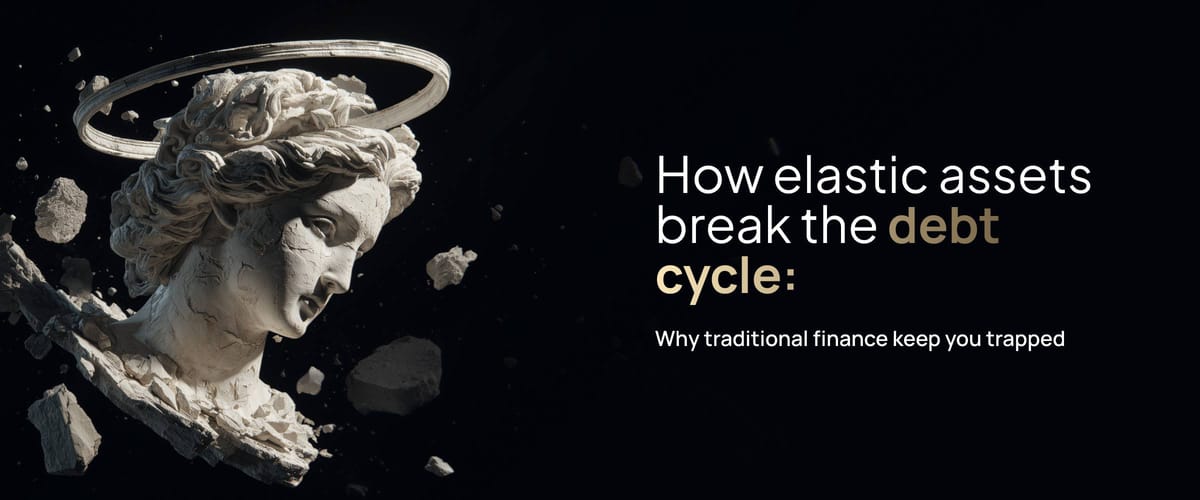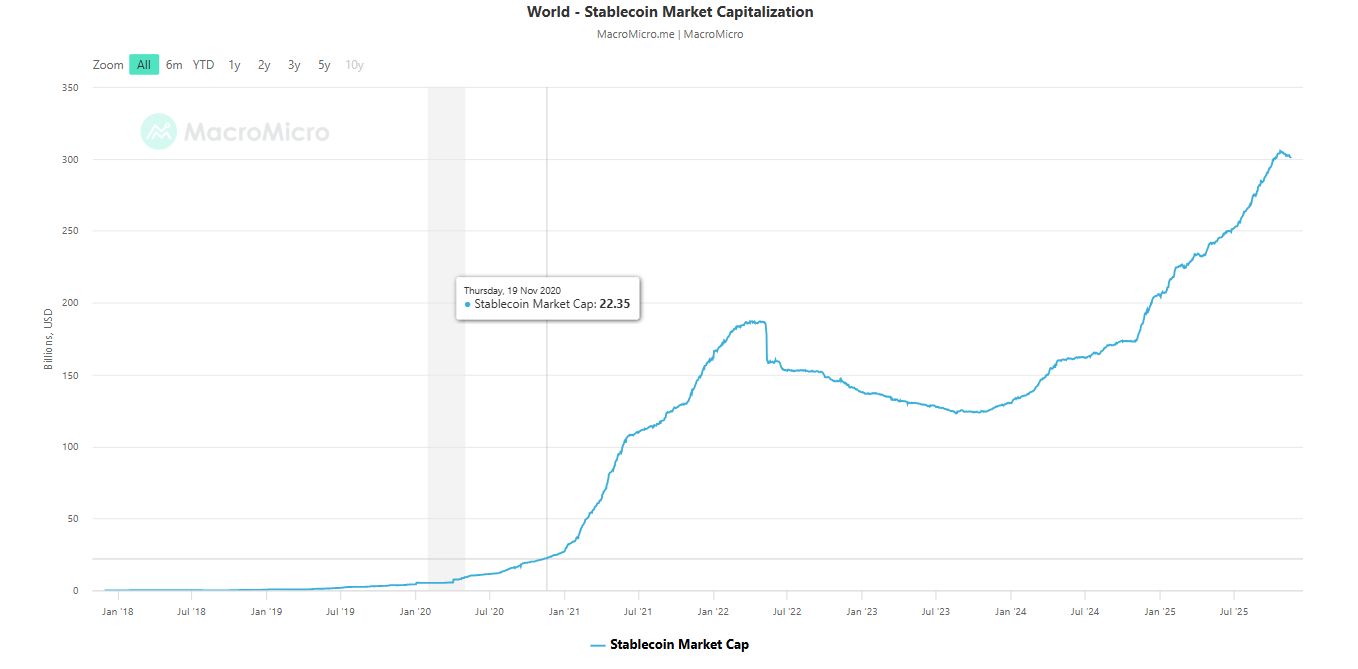How Elastic Assets Break the Debt Cycle: Why Traditional Finance Keeps You Trapped

The promise of stablecoins seemed too good to be true: a digital currency that maintains its value while offering the benefits of blockchain technology. For millions of users worldwide, particularly those in countries with volatile currencies, stablecoins appeared to be the perfect hedge against economic instability. But there's a hidden truth that most users don't realize until it's too late: traditional stablecoins like USDC and USDT are quietly perpetuating the same debt cycles that trap users in legacy finance.
People assume stablecoins are independent, but that's wrong. Centralized ones rely on banks, which lend your deposits for profit, adding systemic risk. "Decentralized" ones often can't even hold through tough markets and rely on debt-based collateral systems.
2. The Hidden Debt Trap
Here's what nobody tells you: that $10,000 USDC you bought thinking you escaped traditional finance? It's still tied to the same fractional reserve banking system that creates boom-bust cycles. Your stablecoins are backed by Treasury bonds and bank deposits, the very instruments that fuel endless debt expansion and financial instability.
Let's break this down with actual numbers, not theories.
The Reality of Debt Cycle:
- Bank Reserves: USDC backed by fractional reserve deposits
- Treasury Bills: Government debt instruments funding your "stable" coin
- Rehypothecation: Your deposits get lent out multiple times
- Counterparty Risk: Circle and Tether control $170+ billion in assets
- Systemic Risk: When banks fail, your "stable" coins fail too
Total damage: You're still trapped in the debt-based monetary system. That's not independence. That's systematic financial dependence.
This isn't some edge case. When Silicon Valley Bank collapsed in 2023, USDC temporarily depegged to $0.87 because Circle had $3.3 billion stuck in the failed bank. Every dollar-pegged stablecoin inherits this problem because they're backed by the same fragile debt-based system.
3. Why Traditional Stablecoins Are Broken by Design
The core issue? Debt-backed stablecoins give you price stability but zero protection against systemic financial collapse.
Circle and Tether can freeze your assets with an API call. Billions have been blacklisted already. Your "decentralized finance" isn't decentralized when it runs on centralized debt instruments.
In nations like Argentina, people pay extra just to get stablecoins and escape local currency meltdowns. Argentina now leads global crypto adoption with 61.8% of transactions being stablecoins. But they're just switching from one debt-based system to another - trading pesos backed by Argentine debt for dollars backed by US debt.
But that's the problem. We're choosing between different flavors of debt dependency instead of building something that breaks free from debt cycles entirely.
4. The Elastic Finance Solution
This is where things get interesting. What if instead of backing assets with debt, we built systems that maintain value through supply elasticity and market mechanisms?

It's not debt-backed, not bank-tied, but something fresh! A system built to hold value without requiring endless debt expansion, while fixing DeFi's core dependency on traditional finance. Ampleforth kicked it off with AMPL, a token that adjusts supply on-chain to match economic demand. It's like encoding monetary rules right into the blockchain, no debt required.
But one token can't do it all - low vol, leverage, easy use. So Ampleforth built an ecosystem splitting roles: stable parts for safety, risky for gains, all independent from debt cycles.
AMPL- The base layer. Elastic supply that responds to demand without requiring debt backing. When demand rises, supply expands. When demand falls, supply contracts. No loans, no fractional reserves, just pure market mechanics.
SPOT - The stability layer. Senior AMPL tranche that provides stability through algorithmic mechanisms, not debt collateral. It's designed to maintain purchasing power through market forces, not bank guarantees.
stAMPL - The leverage layer. ~1.3x exposure to AMPL's rebases with no liquidation risk and no debt. Earns rotation fees when the system needs more junior capital.
wAMPL - The DeFi integration layer. Fixed-supply wrapper that captures AMPL's rebases through price appreciation, completely independent from traditional banking.
This isn't just theory. SPOT is already live, trading, and providing real stability without any debt backing while traditional stablecoins remain vulnerable to banking system failures.
Ampleforth's products use elastic supply adjustment daily to maintain stability without debt. They use tranching, splitting assets into stable and risky parts, so users get true ownership without borrowing against anything. This is the approach we need - a system where you control your money without depending on someone else's debt.
The system is built to bend rather than break during extreme market conditions and can exist forever as stable value without bailouts or debt rollovers. Moreover, “SPOT has no admin keys and no debt backing”, so it can't be frozen, censored, or collapse due to bank failures like traditional stablecoins such as USDC (which lost $3.3B in SVB) or USDT (which has billions in commercial paper debt). SPOT can be held without counterparty risk, used as peer-to-peer digital cash, or rotated as collateral in defi, wherever stability is needed without debt dependency.
5. Breaking Free
Traditional stablecoins aren't evil. They're useful for payments, trading, and escaping hyperinflation. In the past 5 years, we have come a long way from just $22B whole stablecoins market cap to around $300B as of today.

But as long-term stores of value free from debt cycles? They're systematically failing. The $300 billion stablecoin market represents convenience, but also represents $300 billion still trapped in the debt-based monetary system. That's not financial freedom, that's digital serfdom.
6. Conclusion
We need assets that maintain stability through market mechanisms, not debt instruments. The technology exists. SPOT is working. stAMPL provides leverage without borrowing. wAMPL enables DeFi integration without traditional banking dependencies, The choice is clear: keep accepting systematic debt dependency with bank-backed tokens, or migrate to systems designed for true financial independence.
Your future financial freedom depends on understanding this difference. The question isn't whether debt cycles will continue trapping stablecoin users. The question is whether you'll keep participating while it happens. Traditional stablecoins deliver nominal stability but perpetuate debt dependence. Elastic finance - AMPL, SPOT, stAMPL offers true independence from debt cycles and banking system risks. In a debt-driven world, choosing elastic assets over debt-backed tokens transforms systematic dependency into genuine financial sovereignty.




